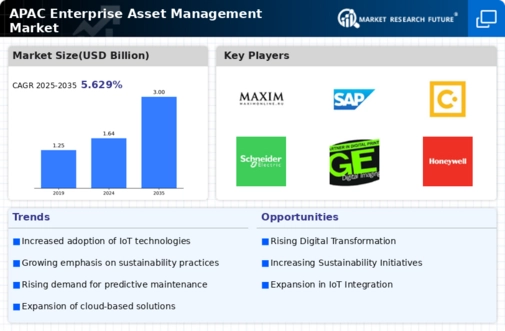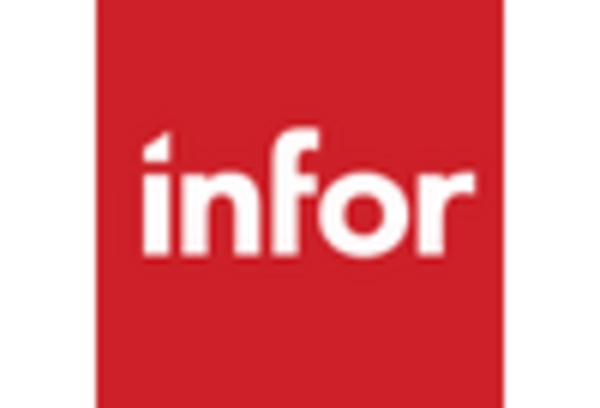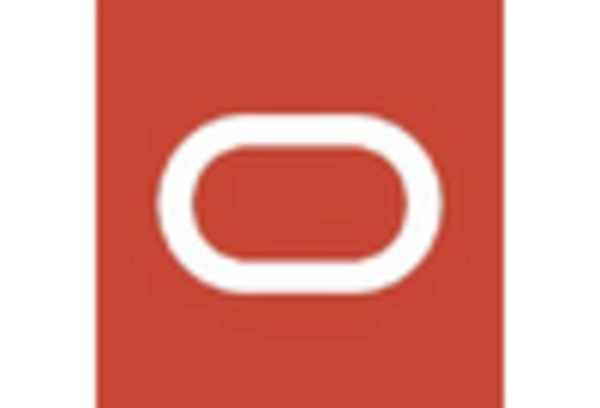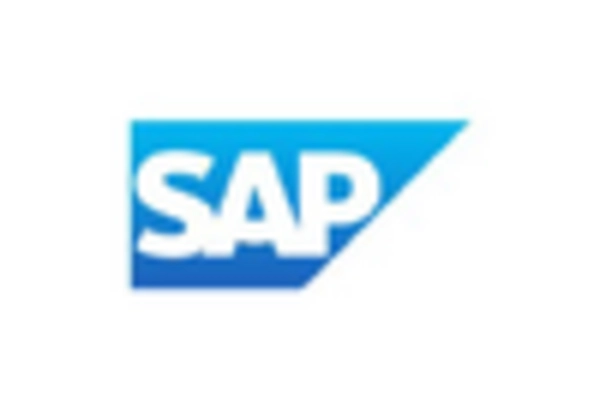China : Robust Growth and Innovation Hub
Key markets include major cities like Beijing, Shanghai, and Shenzhen, which are hubs for technology and manufacturing. The competitive landscape features significant players like IBM, SAP, and Oracle, all vying for market share. Local dynamics are characterized by a strong push for digital transformation across industries, including manufacturing, energy, and transportation. The focus on IoT and AI applications in asset management is reshaping the business environment.
India : Rapid Growth and Digital Adoption
Key markets include states like Maharashtra, Tamil Nadu, and Karnataka, which are industrial powerhouses. The competitive landscape features major players such as SAP and Oracle, alongside local firms. The business environment is increasingly favorable, with a growing emphasis on technology adoption across sectors like manufacturing, utilities, and transportation. The integration of AI and machine learning in asset management is gaining traction.
Japan : Innovation and Efficiency at Forefront
Key markets include Tokyo, Osaka, and Nagoya, which are centers for technology and manufacturing. The competitive landscape is dominated by global players like Siemens and IBM, alongside local firms. The business environment is characterized by a high level of technological adoption, particularly in sectors such as manufacturing, energy, and transportation. The emphasis on automation and predictive maintenance is reshaping asset management practices.
South Korea : Innovation and Infrastructure Development
Key markets include Seoul, Busan, and Incheon, which are pivotal for technology and manufacturing. The competitive landscape features major players like SAP and Microsoft, alongside local companies. The business environment is favorable, with a strong emphasis on R&D and innovation across sectors such as manufacturing, logistics, and utilities. The integration of AI and IoT in asset management is becoming increasingly prevalent.
Malaysia : Investment in Digital Transformation
Key markets include Kuala Lumpur, Penang, and Johor, which are industrial and technological hubs. The competitive landscape features players like Oracle and Infor, alongside local firms. The business environment is evolving, with a focus on technology adoption across sectors such as manufacturing, energy, and transportation. The emphasis on sustainability and efficiency is driving innovation in asset management practices.
Thailand : Focus on Infrastructure and Innovation
Key markets include Bangkok, Chonburi, and Chiang Mai, which are vital for industrial growth. The competitive landscape features major players like SAP and Microsoft, alongside local companies. The business environment is becoming more favorable, with a strong emphasis on technology adoption across sectors such as manufacturing, logistics, and utilities. The integration of IoT and AI in asset management is gaining traction.
Indonesia : Investment in Digital Solutions
Key markets include Jakarta, Surabaya, and Bandung, which are central to industrial growth. The competitive landscape features players like Oracle and SAP, alongside local firms. The business environment is evolving, with a focus on technology adoption across sectors such as manufacturing, energy, and transportation. The emphasis on efficiency and sustainability is driving innovation in asset management practices.
Rest of APAC : Diverse Growth Across Sub-regions
Key markets include emerging economies in Southeast Asia and the Pacific Islands, where local players are gaining traction. The competitive landscape is diverse, with a mix of global and local firms. The business environment varies significantly, with some regions focusing on agriculture, while others emphasize tourism and manufacturing. The integration of technology in asset management is becoming increasingly important across sectors.


















Leave a Comment